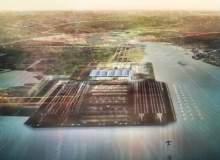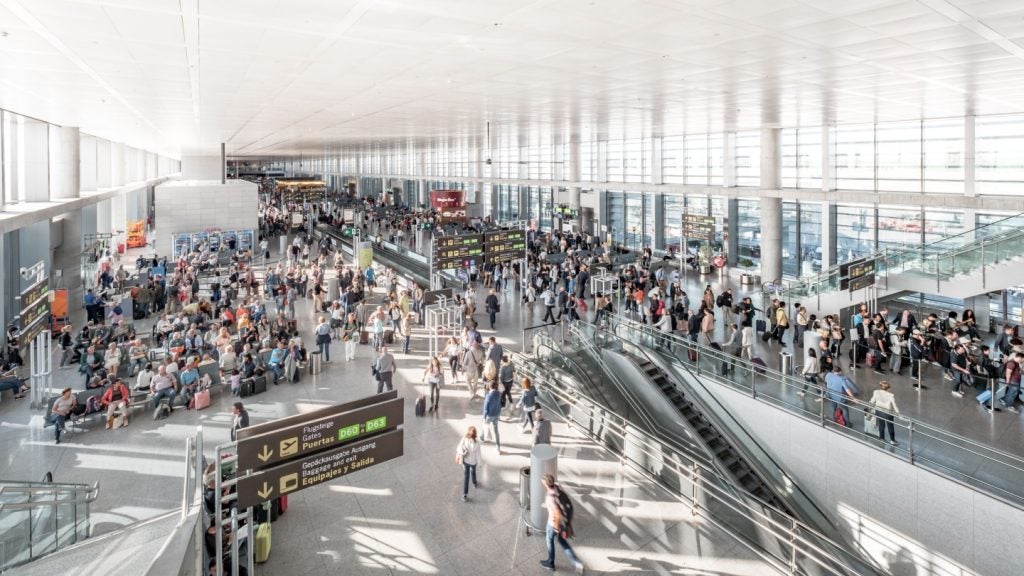
With the UK’s only hub airport – Heathrow – currently operating at capacity and plans for expansion scrapped, the need for new solutions to the UK’s spiralling capacity problem has never been greater.
In November 2011, London mayor Boris Johnson published a report calling for an extra hub airport located in the south-east in order to reap the benefits of potentially lucrative foreign investment from fast-developing countries, providing a much-needed boost to the UK economy.
A third runway for Heathrow had been backed by the previous Labour government; however, the removal of such support as confirmed by shadow transport secretary Maria Eagle meant that any such expansion was to be considered indefinitely "off the agenda".
The same sentiments were echoed by transport secretary Justine Greening, although she did also refuse to rule out support for Boris Johnson’s controversial plans for a new airport to be constructed in the south-east of England, sparking renewed debate about the viability of plans that had previously been knocked back by Prime Minister David Cameron.
A new hub located in the Thames Estuary on a man-made stretch of land, while a novel concept, could yet prove to be the answer to the UK’s capacity predicament.
See Also:
Boris Island
The plans, dubbed Boris Island, have been backed as a potential solution to capacity problems at airports situated close to London.
How well do you really know your competitors?
Access the most comprehensive Company Profiles on the market, powered by GlobalData. Save hours of research. Gain competitive edge.

Thank you!
Your download email will arrive shortly
Not ready to buy yet? Download a free sample
We are confident about the unique quality of our Company Profiles. However, we want you to make the most beneficial decision for your business, so we offer a free sample that you can download by submitting the below form
By GlobalDataThe three potential areas for such an airport have been listed as the man-made island, the Isle of Grain in Kent and the Hoo Peninsula, which separates the Thames and Medway rivers. Tasked with developing a proposal for the Thames Hub, Lord Foster announced his design on 2 November 2011, comprising a four-runway airport and high-speed rail links connecting Kent with London. Such an airport would be capable of handling 150 million passengers per year and transporting them to London within 30 minutes courtesy of new rail infrastructure.
Coaxing trade investment
The argument for the Thames Hub lies in a new terminal’s ability to potentially coax billions of pounds in investment from growing economies, such as China or Brazil, into the country through the use of direct air links. In Boris Johnson’s report into a new transport hub, he cited France’s £1.26bn of investment from Brazil as a result of direct air links between the two nations.
The airport’s capability to accommodate long-haul airline schedules and demand from Asian markets would also allow the capital to maximise its geographical position as an ideal stop-off point for flights between North America, and Europe and Asia, which is currently being eroded by global hubs such as Dubai.
Senior figures within the current Labour government, including Chancellor of the Exchequer George Osborne and director of strategy Steve Hilton, are rumoured to support the plans. Transport secretary Justine Greening has, however, raised concerns as to the viability of such an expensive investment and could oppose it.
Spiralling costs and bird protection
One of the key opposition points regarding the Thames Hub is the staggering design costs associated with it. Lord Foster, who has designed similar projects such as the Chek Lap Kok airport in Hong Kong, estimated that the total project cost could reach as much as £50bn should a new London orbital railway also be included in the plans. The need to build an artificial offshore island not only contributes significantly to the cost of the project, but also to the construction time, with three to five years needed for the land to bed in.
The plans could also be disrupted by the presence of five special protection areas for birds situated off the coasts of Kent and Essex, directly in the flight path of the Thames Hub. Infrastructure construction of this magnitude would require the local bird population, estimated to be approximately 300,000, to be re-housed in man-made structures further away from the airport itself.
The relocation of birds is further complicated by the need to enforce a bird-free zone in the direct vicinity of the airport in order to reduce birdstrikes, which have the potential to down aircraft. Birdstrikes were to blame for the air crash in New York in January 2009, in which the pilot of a plane leaving La Guardia airport was forced to conduct an emergency landing in the Hudson River after at least one bird was sucked into an engine.
Capacity served elsewhere
There is also a convincing argument that capacity problems within the UK could be alleviated by a number of major airports up and down the country, including Birmingham and Manchester, which have the potential for expansion should the need arise. Birmingham Airport in particular is already the target of expansion plans which would see its capacity rise to a Gatwick-esque 25 million passengers per year.
Birmingham will also open a longer runway, expected to be completed in 2013, which will see the airport capable of catering for aircraft from destinations across the world.
Department for Transport projections, announced in December 2011, forecast that the number of passengers using the UK’s airports could reach 540 million a year by 2040, ahead of the 2008 figure of 372 million, with Manchester Airport passenger numbers expected to almost double to 56 million a year.
Both Birmingham and Manchester airports would also benefit from the forthcoming High Speed Two rail link, which would link Manchester and Birmingham with London, with the Birmingham Interchange also including a direct link to the airport as part of the HS2 investment.
Expanding airports such as Birmingham and Manchester, while potentially lucrative for the economy, could incense residents in the densely populated cities due to the inevitable rise in traffic and noise pollution. Lord Foster has also expressed unease at the thought of enhancing existing infrastructure, citing his belief that the problems associated with capacity cannot simply be solved by patching up ageing airports.





